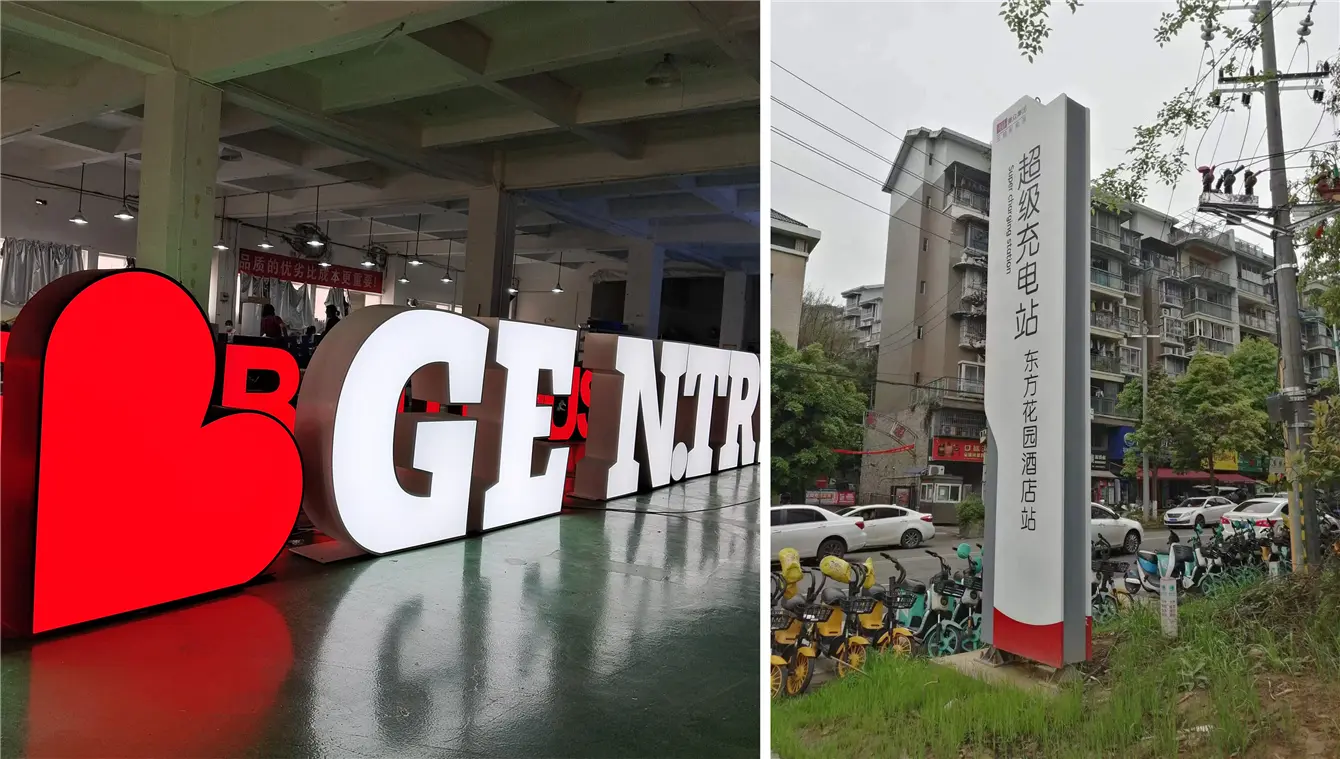The Importance and Key Points of Outdoor Signage Design
OutDoor Signage is an indispensable part of urban environment and brand image. They not only provide directional guidance, but also carry the functions of information transmission and brand promotion. Here are several key points for outdoor signage design:
1. Integration of uniqueness and environment
Outdoor signage design needs to consider the dynamic perspective of pedestrians, including distance, perspective, and environment. When designing, the signage should be coordinated with the outdoor environment to create a visual aesthetic.
The shape and size of the identification should be determined according to the actual space and environmental conditions to create a good visual effect
2. Promptness and conciseness
Due to the fact that the audience is mobile pedestrians, outdoor signage design should focus on prompts, with both images and text, using images as the main guide and text as an auxiliary. The signage design should be simple and clear, avoiding redundancy to attract the audience's attention
Simplicity is an important principle in outdoor signage design, and the entire image and facilities should be as simple as possible, leaving ample room for imagination for the audience
3. Planning and rationality
Successful outdoor signage must have a rigorous plan, including market research, analysis, forecasting, and other activities, to develop advertising strategies such as graphics, language, and color.
Reasonable graphic and copy writing design follows aesthetic principles, with graphics being concise and eye-catching, and copy writing striving for simplicity and power.
4. Brand recognition
Outdoor signage design should highlight brand elements, such as logo color, font, etc., to enhance brand recognition.
Meanwhile, font selection and layout standardization are also crucial to ensure the brand recognition and readability of outdoor signage.
5. Visual impact
Outdoor signage design should have a strong visual impact, attracting customers' attention through beautiful colors, unique shapes, and creative patterns.
At the same time, the design should be coordinated with the brand image, reflecting the brand's personality and culture.
6. Environmental adaptability
Outdoor signage needs to produce good results in different environments, such as high brightness and visibility at night, as well as material adaptability in different climatic environments.
Identification materials shall have the characteristics of weather resistance, corrosion resistance, aging resistance, etc. to ensure long-term use effect.
7. Legal requirements
The installation of outdoor signage should comply with relevant laws, regulations, and industry standards, ensuring safety and stability, not endangering personal safety, and not affecting the safety and functionality of buildings.

By considering the above points comprehensively, outdoor signage design can not only improve the readability and comprehensibility of urban environments, but also enhance people's awareness and experience of urban spaces, while providing effective support for brand promotion.
At the beginning of the design, clearly identify the main functions and target audience of the identification. This helps to determine the focus of the design and ensure that its practicality is not affected. A simple outdoor signage design is more practical . Appropriate materials should be selected according to the environment.
Outdoor signage design should be coordinated with the surrounding environment.
neither too abrupt nor overlooked.
Emphasize important information through color, size, and shape contrast, making it visually prominent while maintaining overall design harmony.No matter how beautiful the design is, if the information is unreadable, the logo loses its practicality. Ensure that font size, color contrast, and layout are conducive to reading.
Outdoor signage design can not only improve the readability and comprehensibility of urban environments, but also enhance people's awareness and experience of urban spaces, while providing effective support for brand promotion.



















